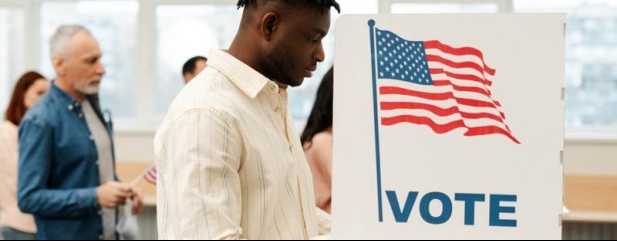Archived article
Please note that tax, investment, pension and ISA rules can change and the information and any views contained in this article may now be inaccurate.
It could be now or never if the Fed wants to cut rates before the election

The recent presidential debate brought the US election into focus and the November poll is now looming large in investors’ consciousness.
A knock-on effect of the timing of the election is the US Federal Reserve is running out of room if it is going to cut interest rates before doing so would be considered too political.
REMAINING FOMC MEETINGS THIS YEAR
30-31 July
17-18 September
6-7 November
17-18 December
Based on the scheduled meetings of the Fed’s interest-rate setting Federal Open Market Committee, the summit which concludes on 31 July might be its last chance. Investors are pricing in a rate cut in September but it doesn’t seem too much of a stretch to suggest this could be too close to the poll for comfort.
The market has taken the scaling back of rate cut expectations surprisingly well. However, if the ultimate scenario is rates are, at best, cut once in December, then it could spark some concern and disappointment, particularly as there are signs the US economy has taken a turn for the worse and tightness in the jobs market has eased.
As we discuss in this week’s feature on the US consumer, their spending power seems close to being exhausted. And, while the headline non-farm payrolls number came in ahead of expectations at 206,000 versus the consensus estimate of 190,000, unemployment ticked above 4% and average hourly earnings were up 0.3%, the smallest increase since the second quarter of 2021.
Readings on non-farm payrolls for the prior two months were revised down by a combined 111,000 which means the three-month moving average for total payrolls growth fell from 212,000 to 177,000 and from 178,000 to 146,000 within the private sector.
Richard Carter, head of fixed interest research at Quilter Cheviot, says: ‘Though this was a relatively solid jobs increase, coming in slightly higher than expected, when considered alongside the downturn in earnings as well as signs of softening elsewhere in the economy, it could prove to be enough for a shift in the Federal Reserve’s stance. The Fed’s decision-making is highly data sensitive, and with a growing number of datapoints suggesting a slowing economy it may well consider easing rates later this year.
‘However, as the presidential election campaign draws closer, the Fed will not wish to be seen as being political in any way, so it is unlikely to make any sudden moves while things are hotting up. The Fed has also confirmed it requires greater confidence inflation is heading sustainably back down to target, and with this not yet achieved and looking increasingly likely to be a slow process, just one rate cut this year is still likely to be a sensible prediction.’
Important information:
These articles are provided by Shares magazine which is published by AJ Bell Media, a part of AJ Bell. Shares is not written by AJ Bell.
Shares is provided for your general information and use and is not a personal recommendation to invest. It is not intended to be relied upon by you in making or not making any investment decisions. The investments referred to in these articles will not be suitable for all investors. If in doubt please seek appropriate independent financial advice.
Investors acting on the information in these articles do so at their own risk and AJ Bell Media and its staff do not accept liability for losses suffered by investors as a result of their investment decisions.
Issue contents
Feature
Great Ideas
News
- Confident Supreme continues to deliver the (fast-moving consumer) goods
- Victrex shares dip with second-half target under threat
- Paramount agrees $28 billion merger with Skydance Media
- Political stability in the UK is in stark contrast to uncertainty across the channel
- Britvic set for stock market exit after agreeing £3.3 billion Carlsberg buyout
 magazine
magazine








